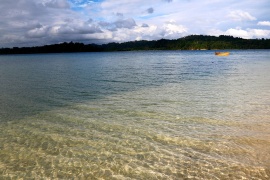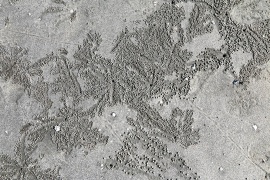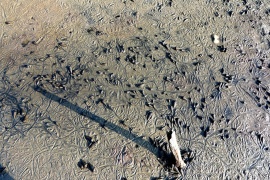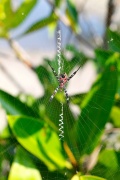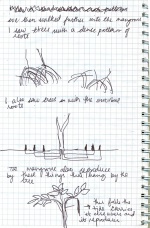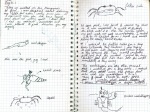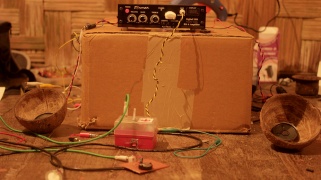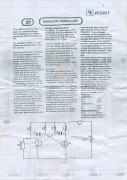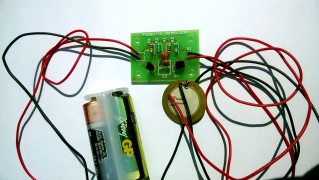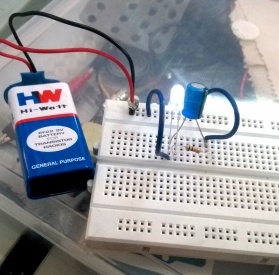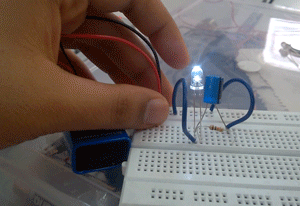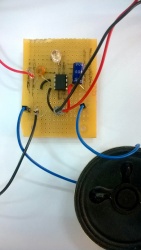Difference between revisions of "Chandni Venkataraman"
(→Getting hands on) |
(→Getting your feet dirty) |
||
| Line 57: | Line 57: | ||
We sat down to make sand sculptures by the shore. I tried to make a hermit crab. <br> | We sat down to make sand sculptures by the shore. I tried to make a hermit crab. <br> | ||
| − | [[File:hermitcrabsandsculp.jpg| | + | [[File:hermitcrabsandsculp.jpg|400px]] |
<br> | <br> | ||
Revision as of 08:11, 13 February 2015
Contents
Week1, Andaman and Nicobar Environmental Team, ANET
Initial Impression
ANET the place we are staying is beautiful. Infact, much too much nature for a city girl like me to be honest but its definitely something I could get used to. The ideas of being nature friendly and “in touch with nature” is easier said than done. It’s romantic and utopian to talk about conservation of water and electricity but when it actually comes to living like that it is hard. I hated that there wasn’t cold water, or that we were expected to use no more than one bucket of water which was a unique shade of brown.
“I am nervous. I am nervous because I don't know what is coming” - Day 1, ANET
I was slightly nervous about the project as I started to have doubts as to whether I picked the right project. The brief was slightly unclear to me, and the point of the trip to ANET was also something that I didn’t see at that point in time.
I had a lot of burning questions.
What did electronics had to do with a place like ANET?
Did I HAVE to make only a DIY toolkit for school childen?
Did I have to have a background in electronics?
Was the medium of the final outcome have to be a toolkit and was there no other possibilities?
Could I make an electronic art installation?
Was I capable of making biosensors when I formally studied biology over 8 years ago?
After a few conversations with my facilitators, I realised that I was just being anxious about a design process that I should learn to trust by now. Once that realisation came to me, I was open to taking in whatever experiences came not questioning how it is relevant to the brief/graduation project. I decided to be present in that time and to do what was to be done in that time.
Getting your feet dirty
There were four zones to explore in and around ANET. The mangroves, the intertidal zone, under the ocean and the rainforest.
In morning walk, I sat by a small water puddle as I observed the creatures inhabiting that space. Mudskippers, Hermit crabs, fiddler crabs and other types of small crabs. The fiddler crabs were extremely shy creatures. The slightest movement and they would go and hide into the burrow that they dig for themselves. When I tried to stay as still as I could, I observed that they would peak out to the check if I was gone. They were also extremely sensitive to light. When my shadow fell over their burrow they would immediately go and hide. As we walked along, at some point, I had to remove my shoes so as to not get them entirely dirty and wet. The sensorial information that you can feel under the soles of the feet is one that we ignore. We are so disconnected from the earth as between the interface of the feet and the ground we always have shoes. It was a barrier that was broken.
What I really enjoyed about the entire experience was that I had no prior information on what I was going to see. Everything that I took away from the walk in terms of the names of the creatures I saw was by asking someone after noticing them in that environment.
The mangrove walk at night had a different vibe to it. I could not trust the dark enough to remove my shoes. I’d rather kill a crab than to step on one barefoot. On our walk, the strong smell of hydrogen sulphide filled our nostrils. As we walked through the pungent smelling mangrove, we spotted a the dog faced water snake. We entertained ourselves by feeding it two mudskippers.
We started at 5am for the intertidal walk as the high tide would come in at about 10 am. It was a long walk and there were many interesting creatures in the tidal pools.
As the tide was calm, we got to the breakfast point earlier than expected. While waiting for breakfast to arrive, I decided to lie on my back on the shore and feel the sun rays on my skin and listen to the sound of the waves. It was extremely calming and relaxing to just listen to the continuous sound of the waves.
We sat down to make sand sculptures by the shore. I tried to make a hermit crab.
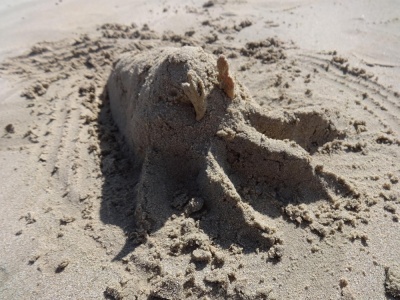
At night, we went on a walk on the beach in attempt to spot the black-banded sea krait which is supposedly one of the most poisonous snakes in the world. We spotted 4 snakes that night.
What was most striking for me was the drastic change in scene between day and night. For me, I compare it to changing the set on stage in a theatre performance. It is the same space with different props, lightings and characters.
The Scuba diving experience for me was the highlight of the entire trip. I was very anxious about feeling claustrophobic underwater. The idea of breathing underwater is something that your brain takes a while to get used to. During the pool session, I constantly felt like I was choking underwater even though I had the regulator in my mouth to breath. I was determined not to give up and cave into my fears as I so badly wanted this experience. I focussed on breathing rhythmically in order to stay calm and to stay focussed. The urge to gag underwater disappeared and I was able to do all the exercises with ease.
On the day of the scuba diving, from the moment of the back flip to going down 10m deep into the ocean I was calm and composed. The ocean is such a beautiful and a surreal place. An alternative world that exists on the same planet. It’s like nothing I have ever seen before.
Getting hands on
One of the things I made during the trip was set of speakers made out of coconut shell. Unfortunately, since we didn't have a amplifier chip we could only connect it to a stereo system.
However, I think its a nice first idea and can definitely undergo further prototyping. it would interesting to see how the acoustics might change with the use of different speakers and different coconut shells as the thickness and size would also effect the acoustics of the sound.
I also made a mosquito repellant from an existing DIY kit. I am very doubtful as to whether the circuit really repels the mosquitos. I would like research on it further.
Personal learnings - A Reflection
I think one of life's most complex struggles is learning to trust. Whether it is learning to trust nature, life, the people around you or yourself. We all have our comfort zones, our anxieties and our issues. When you set your mind to overcome fears that you might have there is always something rewarding waiting on the other side of it.
For me a big learning was actually getting over small conditioned habits. Fear of creepy crawlies, fear of walking barefoot, fear of the ocean, obsessing over clothes being clean, feeling uncomfortable getting wet in the rain,etc. As the week progressed, it was virtually impossible for me to exist and have a good time without letting go of all these conditioned habits.
Putting yourself outside your comfort zone (extreme space?) makes you learn something about life and yourself. (extends your senses?)
Week 2, An Introduction to Electronics
Batteries, LED's and the Switch
Today we were formally introduced to electronics. We were also introduced to the breadboard for circuit prototyping.
Our first circuit was pretty straight forward, 3V battery connected to a LED. Our Second circuit was to connect an LED to a 9V battery.
After burning the LED out, we were introduced the to resistor. Using a 1kΩ resistor, we rigged up a circuit such that the burning out of the LED could be prevented.
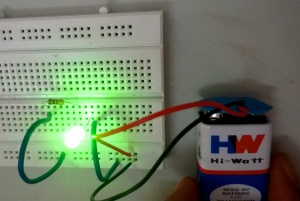
We explored the adding of a switch to the circuit. I tried the flip switch and the button switch.
We then had to make out own switch.
I used a nut and bolt as a switch.
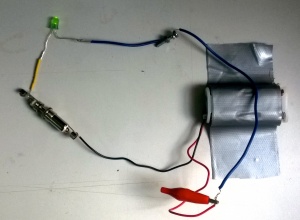
I call this circuit the dancing ballerina as the lit LED circles the bolt as the nut is screwed on.
LDR, Capacitors, IC's and building an amplifier circuit
We then learnt about capacitors. We build a circuit that would slowly diffuse the LED when the battery was pulled out.
We found out that in order for the LED diffuse slower we either had to replace the capacitor with a higher value or use a resistor that was higher in value. The problem with using a resistor with a higher value is that the LED doesn't burn as bright to begin with.
We learnt to make a circuit with which we could listen to the different qualities of light. By connecting an light-dependent resistor (LDR) in series with a resistor and connecting it to an amplifier we were able to listen to the change in light that the LDR was sensing. We then learnt to make our own amplifier circuit.
Week3, Rapid Prototyping
This week we worked as a group towards making an instruction guide for building the amplifier circuit.
The documentation can be found below.
--> Explaining the Amplifier Circuit

